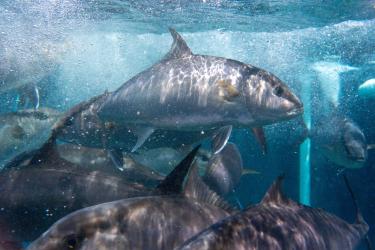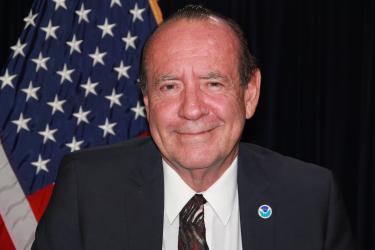NOAA Fisheries held its 13th National Stock Assessment Workshop (NSAW) from May 22 to May 24, 2018 at the National Academy of Sciences’ Beckman Center in Irvine, California. The workshop attracted 80 participants drawn from NOAA Fisheries headquarters, science centers, regional offices, international partners, and Fisheries Management Council staff. It featured invited speakers from the National Weather Service, the Inter-American Tropical Tuna Commission, and the International Pacific Halibut Commission.
The NSAWs have two primary objectives:
- Address an important or topical theme of common concern across NOAA Fisheries.
- Provide a forum for interaction between the large diversity of NOAA Fisheries scientists involved in conducting stock assessments, providing management advice, and related activities.
Through a combination of presentations, breakout discussions, and plenary sessions, the 13th NSAW sought to identify the challenges, lessons learned, and best practices related to two themes: stock assessment model complexity and stability, and the use of ensemble modeling in stock assessments.
Model Complexity and Stability
NOAA Fisheries’ push toward holistic, ecosystem-based stock assessments coupled with recent advances in computer simulation and data analysis, has resulted in the development of increasingly complex fisheries stock assessment models. These models tend to have increased realism; that is, they better represent biological interactions and account for additional factors and sources of variation that simpler assessment models often omit. However, their use raises important questions relating to the tradeoffs between using more detailed (complex) models over simpler ones given their differences in data requirements, model stability, time and resource costs, and the potential quality and timeliness of management advice.
Workshop participants discussed how to make informed decisions about when it was appropriate to favor the use of a simple or complex model. Through these discussions, workshop participants recommended that:
- A range of model complexities should be explored;
- Management strategy evaluations (MSEs) and/or simulations are useful tools to help select an appropriate level of model complexity;
- More complex models are not inherently less stable; and,
Participants identified the need to explicitly consider three things when determining the appropriate level of model complexity: 1) the management end goals or objectives; 2) the hypotheses being tested; and 3) the available data. They also stressed that engaging stakeholders early on in the process is important, particularly when identifying management goals and objectives.
Ensemble Modeling
Stock assessments are used to provide scientific advice to fishery managers, and that advice is often generated using a single “best” model. This tactic can be problematic because there is uncertainty around the selection of the “best” model, and potential loss of relevant information in the models not selected. One may ask then, why use only a single model? Why not incorporate information from several models? Ensemble modeling is a statistical technique that does just that by combining results from multiple alternative models and data sets to generate results and projections of future system states, and is currently used in applications such as hurricane modeling. This technique could help NOAA Fisheries in its gradual move toward ecosystem-based fisheries management (EBFM) as it attempts to account for more species and environmental tradeoffs, with potentially increased complexity and uncertainty in the system.
The objectives of this session were to identify: 1) situations when ensemble modeling is beneficial for providing fisheries management advice; 2) challenges to operationalizing ensemble modeling in fisheries stock assessments and management; and 3) best practices for conducting ensemble modeling in fisheries stock assessments and incorporating results into management decisions.
In general, workshop participants recommended that;
- Ensemble modeling could be useful and appropriate for fisheries management;
- The main benefit to using an ensemble modeling approach is improved characterization of uncertainty;
- The major challenges to operationalizing ensemble models are issues with communicating results, management inertia, and time requirements;
- Improved communication and stakeholder engagement, more resources, best practices guides, and staff training would help overcome those challenges.
Read Full Report
Proceedings of the 13th National Stock Assessment Workshop includes a complete summary of the discussions and recommendations from the workshop, as well as presentation abstracts and a list of workshop participants.


